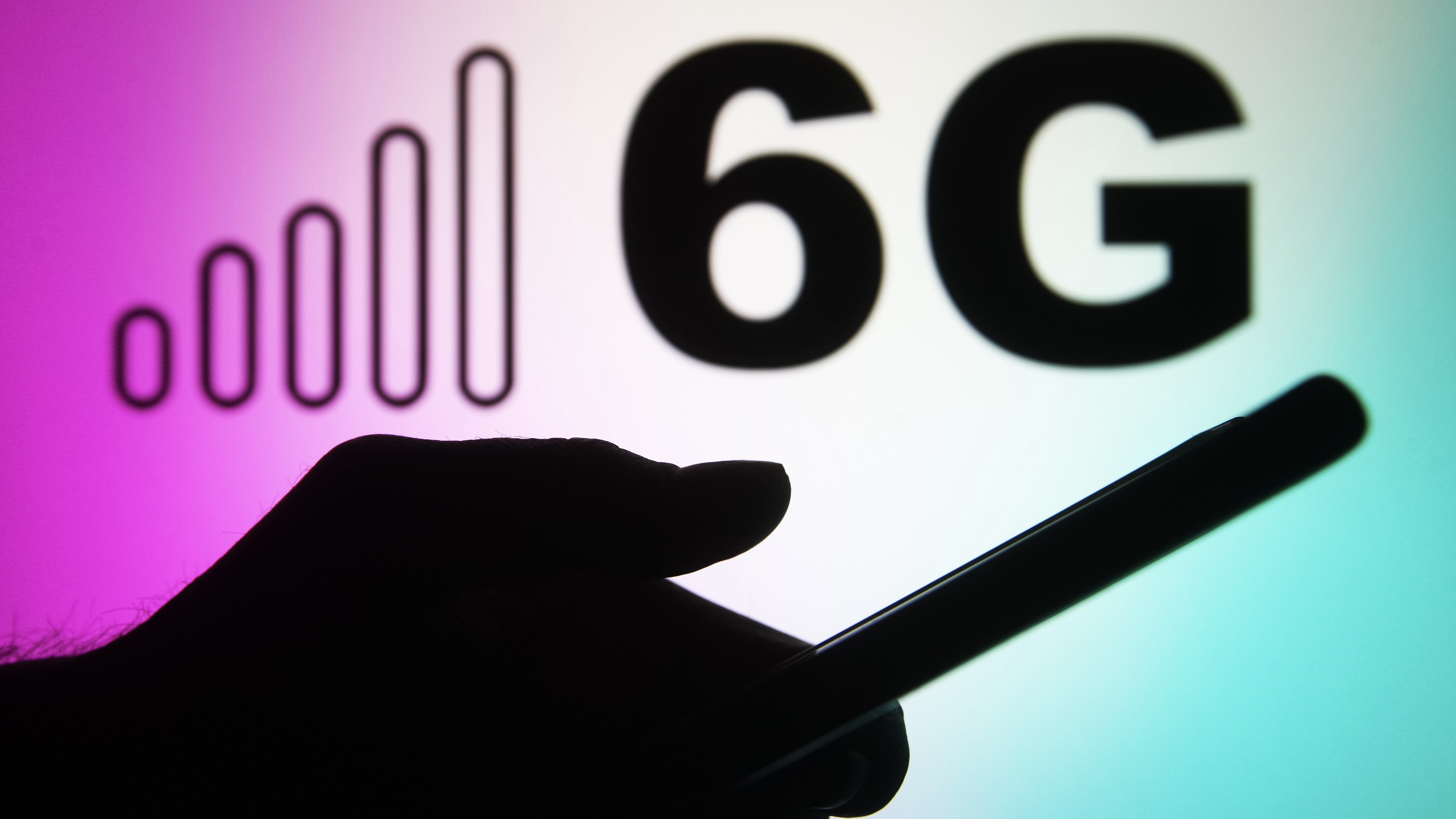How will 6G transform the workplace?
The next generation of network connectivity could supercharge the metaverse, boost productivity, and render the smartphone obsolete


The next generation of connectivity is on the horizon, promising to offer lightning fast speeds that will change the way people use their devices. The innovation of 6G isn’t just about speeds, though. The next generation technology will go far beyond 5G’s capabilities, opening the door to multiple use cases difficult to imagine today.
In the business world, 6G will be game-changing for the metaverse, enabling holographic meetings without the need to wear a headset. More broadly, 6G has implications in industrial settings, where it will drastically boost productivity in factories and allow access to machinery even when workers are off-site.
It’s early days yet, but 6G’s possibilities are so vast that Nokia’s CEO Pekka Lundmark predicts the technology could make smartphones obsolete. When 6G arrives in 2030, “the smartphone as we know it today will not be the most common interface,” according to Lundmark, adding “many of these things will be built directly into our bodies”.
Although 6G is at an early research stage, and standards have not been set, the technology’s possibilities are certainly exciting.
What will widespread 6G look like?
The current generation of cellular technology, 5G, offers higher bandwidth and lower latency, enabling use cases including large scale Internet of Things (IoT) and virtual reality (VR). When 6G eventually launches, it is expected to be up to 100 times faster than 5G, at approximately 1,000 Gbit/sec.
Nokia’s 2021 white paper ‘Extreme massive MIMO for macro cell capacity boost in 5G-Advanced and 6G’, details how the mid-spectrum bands hosting 6G networks will provide around 20 times more capacity compared to 5G in the 3.5GHz band.
Beyond speed, 6G will be “a fully integrated system that allows for instantaneous communications between devices, consumers, and the surrounding environment”, says futurist Bernard Marr. He adds 6G-enabled enterprise technologies will “transform the way companies process information, communicate, make decisions, and train employees”.
Sign up today and you will receive a free copy of our Future Focus 2025 report - the leading guidance on AI, cybersecurity and other IT challenges as per 700+ senior executives
Taking this into account, 6G use cases include holoportation – described by Microsoft as “3D capture technology that allows high-quality 3D models of people to be reconstructed, compressed and transmitted anywhere in the world in real time” – and large-scale digital twin technology. This could reshape the way people interact with each other at work, says Sylwia Kechiche, principal analyst, enterprise at Ookla.
She paints a picture where meetings are held in virtual spaces, with digital representations of people and connected things. “Such immersive working could enable optimal levels of efficiency and productivity; large amounts of sensors will continuously send information and combine it with contextual data,” she envisages. “This can then be analysed in real-time, simultaneously looking at past events to help with problem solving by recommending the best course of action.”
As 6G rolls out, online experiences should become more powerful, says Jessica Ellis, director in applied 5G at Deloitte. She cites the example of the metaverse. “With such extended reality, users can imagine walking down a virtual high street, witnessing life-like people, entering well-known businesses, and participating in an interactive experience. These advancements will blur the lines between virtual and reality on a scale we can’t quite comprehend right now.”
With 6G becoming widespread, the business world and the way we work, meet up and network will start to change. Online meetings could see a full mobile hologram of the other person beamed into the room, adds Ellis.
Instead of spending hours on 2D Zoom or Teams meetings, people will meet in 3D digital spaces, where avatars will have “real” eye contact and express body language in real-time, says Marr. “If we need to hold a one-to-one meeting, we could simply switch all the participants out, and find a quiet virtual space to connect.”
RELATED RESOURCE

The future of work is already here. Now’s the time to secure it.
Robust security to protect and enable your business
6G will have the ability to enable hundreds of millions of simultaneous users to access multiple different metaverses in parallel. At the same time, photo-realistic 3D graphics will be rendered “almost instantaneously”, says Rohit Talwar, futurist and CEO at Fast Future. “This means a banking assistant would be able to visualise a client’s entire account history and resolve complex service issues and requirements face-to-face inside a metaverse.”
With the help of 6G, employee training will evolve too via immersive VR and augmented reality (AR) experiences, Marr says.
Mapping the major upgrades between 5G and 6G
5G is already enabling a host of use cases including IoT applications across transportation, healthcare and farming. 6G is set to bolster this even further, resulting in better productivity and efficiency – especially in industrial use cases.
In industrial settings, 6G will enable latency of nano-seconds with adaptive meta-materials, including surfaces that can become part of the network, says David Lessin, director, network operations and research at ISG.
Factories are likely to have more robotics on production lines, and these will be communicating with logistics and entire supply chains, says Ellis. This could lower operational cost and save time, as well as reducing the environmental impact.
Intelligent and autonomous machines enabled by 6G will require fewer people in industrial environments, allowing employees to work remotely, adds Derek Long, head of telecoms and mobile at Cambridge Consultants. “The environment becomes safer as people are moved from the shop floor to control rooms,” he tells IT Pro. “The shop floor can be reconfigured as people are not going to be so involved, and machines will be located more closely together, with production lines designed around efficient flow.”
The vision of a smart city, where all public services are integrated, could also become reality when 6G enters the fray. “Autonomous vehicles could scale – especially emergency services vehicles and logistics for long journeys – with zero risk of drop out,” Ellis predicts.
Meanwhile, 6G will change your commute to work, via real-time, 4D maps to manage extreme traffic in future cities, including autonomous vehicles. “Your journey will improve with the help of highly accurate sensors in vehicles and at base stations that can navigate and give you the fastest, most comfortable commute,” Marr explains.
Multiple verticals will benefit but, in particular, 6G will revolutionise healthcare, Marr continues. “With lightning fast data speeds, we’ll have smart sensors that float through our bloodstream and monitor and measure every aspect of our health. These connected devices will continuously collect data and analyse information to make recommendations and predict health issues before they arise.”
The scale of the predictions are huge, but 6G’s future isn’t set in stone, and nobody knows with certainty what the technology will materially look like when it takes hold from approximately 2030. While 6G could open up multiple doors for businesses and employees, the reality is likely some way off. Indeed, 5G rollout has so far been fairly slow, and many of its use cases are still yet to reach their full potential.
Kate O'Flaherty is a freelance journalist with well over a decade's experience covering cyber security and privacy for publications including Wired, Forbes, the Guardian, the Observer, Infosecurity Magazine and the Times. Within cyber security and privacy, her specialist areas include critical national infrastructure security, cyber warfare, application security and regulation in the UK and the US amid increasing data collection by big tech firms such as Facebook and Google. You can follow Kate on Twitter.
-
 Trump's AI executive order could leave US in a 'regulatory vacuum'
Trump's AI executive order could leave US in a 'regulatory vacuum'News Citing a "patchwork of 50 different regulatory regimes" and "ideological bias", President Trump wants rules to be set at a federal level
-
 TPUs: Google's home advantage
TPUs: Google's home advantageITPro Podcast How does TPU v7 stack up against Nvidia's latest chips – and can Google scale AI using only its own supply?
-
 4G and 5G protected a fifth of UK business during lockdown
4G and 5G protected a fifth of UK business during lockdownNews Mobile connectivity managed to preserve £205 billion of business for the UK between March and September, O2 claims
-
 Lower level workers missing flexible working tools
Lower level workers missing flexible working toolsNews Higher level employees are getting the tools they need for remote working, but those lower down the pecking order are missing out, a report indicates.
